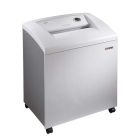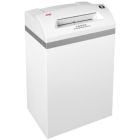Ten Ways to Reduce Your Risk of Identity Theft
With identity theft still on the rise, it's more important than ever to take the necessary precautions to keep yourself safe. People are being more careful with their information. But how can you be sure you're doing enough? While there are always extremes lengths you could take, here is a list of key steps to protect your information.
- Only carry with you what you need. When leaving the house to shop or dine out, take the debit or credit card you plan to use as well as your ID. There's no need to bring every card you possess and doing so increases your risk. If a potential thief sees your open wallet bursting with credit cards, you've immediately raised your risk. Even without a thief catching a glimpse of the contents, in the case of a random purse snatching or a lost satchel, having a card or two at home will help to cover your expenses until new cards can be issued.
- Don't carry your social security card in your wallet. That also goes for your passport and birth certificate. These are key items in stealing someone's identity. They are better kept in a secure location, such as a safe or even a safety deposit box.
- Try not to put your social security number, driver's license number, or phone number on your checks. Better yet, try not to use checks at all. They contain your account number as well as personal information and are an easy way for a thief to leach money out of your account.
- Be vigilant about checking your monthly bank and credit card statements. Immediately report any activity that is out of the ordinary. The sooner you report any suspected fraud, the quicker it can be resolved.
- Send bill payments from the post office. A locking mailbox at your house is fine to use as well. You can also use your bank's online bill pay service, which is more secure than mailing a check.
- Check your credit report at least once a year. You are legally guaranteed one free report annually. Look carefully for any irregularities and report them as soon as possible.
- Immediately report any lost or stolen cards. Even if you think you know where it is, it's better to report the card as lost just in case. Check your mail often until the new card arrives. If you don't receive it within 15 days, call the company. The same goes for any reissued cards you may be expecting.
- Shred everything confidential. Especially anything containing your personal or financial information. Even preapproved credit card offers should be destroyed before disposing; having a card issued in your name is a prime way for thieves to glean your information.
- Make a list or photocopy of all your credit and debit card numbers, bank accounts, investments, and insurance account numbers with expiration dates and phone numbers for customer service and fraud reporting. Keep it in a secure place, such as a safe. This way you have all the necessary information including contact numbers in case your purse or wallet is stolen.
- Write "see photo ID" on the backs of your credit cards in permanent ink. Doing so will hopefully cause merchants to follow your request and catch any would-be users. Don't grumble when asked for ID. Doing so will only encourage workers to stop checking and you'd hate for it to be your stolen card when an ID wasn't asked for.
While this isn't a completely comprehensive list, following these tips will help prevent identity theft from happening to you.









